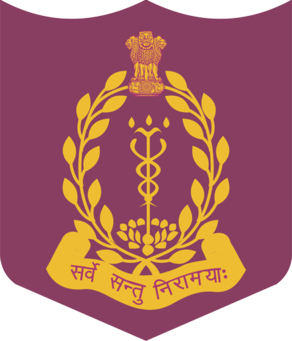
The Armed Forces Medical College (AFMC) is a leading medical training institute in Pune, India, in the state of Maharashtra. The college is managed by the Indian Armed Forces.

The Border Security Force (BSF) is a central armed police force in India under the Ministry of Home Affairs. It is responsible for guarding India’s borders with Pakistan and Bangladesh. It was formed in the wake of the Indo-Pakistani War of 1965 to ensure the security of India’s borders and for related matters. All officers and subordinate staff are trained at the BSF Academy in Tekanpur near Gwalior in Madhya Pradesh.

The Border Roads Organisation (BRO) is a statutory body under the ownership of the Ministry of Defence of the Government of India. BRO develops and maintains road networks in India's border areas and friendly neighboring countries. This includes infrastructure operations in 19 states and three union territories and neighboring countries such as Afghanistan, Bhutan, Myanmar, Tajikistan and Sri Lanka. By 2022, BRO had constructed over 55,000 kilometres (34,000 mi) of roads, over 450 permanent bridges with a total length of over 44,000 metres (27 mi) length and 19 airfields in strategic locations. BRO is also tasked with maintaining this infrastructure including operations such as snow clearance.
The Director General of Police (DGP) is the highest-ranking police officer in Indian states and union territories. The DGP is appointed by the cabinet and holds a three-star rank. The DGP is responsible for overseeing the entire police force and law enforcement activities within their respective jurisdiction. This position holds significant authority and plays a crucial role in maintaining law and order, implementing crime prevention strategies, and ensuring public safety. The DGP is usually appointed by the state government and works closely with other law enforcement agencies and government officials to uphold the rule of law and protect citizens' rights.

The National Cadet Corps (NCC) is the youth wing of the Indian Armed Forces with its headquarters in New Delhi, India. It is open to school and college students on voluntary basis as a Tri-Services Organisation, comprising the Army, the Navy and the Air Force. Cadets are given basic military training in small arms and drill. Officers and cadets have no liability for active military service once they complete their course.
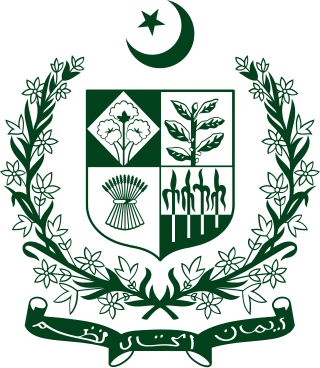
The National Command Authority (NCA) is the authority responsible for safeguarding the national security of Pakistan through command, control and operational decisions regarding Pakistan's nuclear weapons programme.

The Ministry of Defence (MoD) is charged with coordinating and supervising all agencies and functions of the government relating directly to national security and the Indian Armed Forces. The President of India is the ceremonial commander-in-chief of the armed forces of the country. The Ministry of Defence provides policy framework and resources to the armed forces to discharge their responsibility in the context of the country's defence. The Indian Armed Forces and Indian Coast Guard under the Ministry of Defence are primarily responsible for ensuring the territorial integrity of India.

The Defence Institute of Advanced Technology (DIAT) is the premier engineering training institute under the Department of Defence Research & Development, Ministry of Defence, and Government of India. DIAT (DU) provides higher education to civilians and officers from Defence Research Organizations, IOFS, Defence PSUs, ship building agencies, Mazagon Dock Shipbuilders, armed forces of friendly countries, and other central and state governmental agencies.
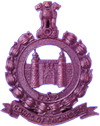
The Indian Army Corps of Engineers is a combat support arm which provides combat engineering support, develops infrastructure for armed forces and other defence organisations and maintains connectivity along the borders, besides helping the civil authorities during natural disasters. College of Military Engineering, Pune (CME) is the premier technical and tactical training institution of the Indian Army Corps of Engineers.
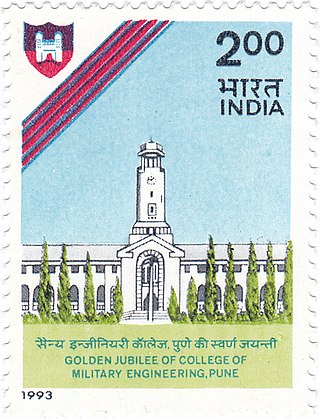
College of Military EngineeringPune (CME) is a technical and tactical engineering training institution of the Indian Army Corps of Engineers of the Indian Army. Training of Combat Engineers, Military Engineering Service, Border Roads Engineering Services (BRES) and Survey is done here.
The Central Public Works Department is a department under the Ministry of Housing and Urban Affairs of India and is in charge of public sector works. It serves as the builder, developer and manager of Central government properties. With time, its area of operations has also expanded to roadways and Bridge engineering.

In India, the Central Armed Police Forces (CAPF) is the collective designation for the central police organizations under the Ministry of Home Affairs. Since 2011, the term "central armed police forces" has been adopted, replacing the term "paramilitary." The CAPF is responsible for internal security and border protection. Each force within the CAPF is led by a Director General (DG), typically an officer from the Indian Police Service (IPS), with the exception of the Assam Rifles, which is headed by a Lieutenant General-ranked officer from the Indian Army.
Hisar Military Station is an Indian Army installation located near the city of Hisar in Haryana state of India. It is the base headquarters of 33rd Armoured Division.
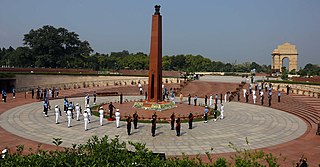
The National War Memorial is a war memorial in New Delhi, Delhi, India, located at India Gate Circle. It has been built to honour and remember soldiers of the Indian Armed Forces who fought in armed conflicts of independent India. The names of armed forces personnel martyed during the armed conflicts with Pakistan and China as well as the 1961 War in Goa, Operation Pawan, and other operations such as Operation Rakshak are inscribed on the memorial walls in golden letters.

In the wake of heavy monsoon rain and flash floods in Jammu and Kashmir, the Indian Armed Forces were deployed in increasing numbers starting 2 September 2014 to conduct search, rescue, relief, relocation, humanitarian assistance and rehabilitation missions in Jammu and Kashmir. By 18 September, over 298,514 people were rescued from the various parts of Jammu and Kashmir by the Armed forces. The Jammu and Kashmir floods, the worst in a century according to Omar Abdullah, the Chief Minister of Jammu and Kashmir, paralyzed the state government. Omar Abdullah, responding to public criticism, told the media "I had no government" in the first few days following the floods, as "My secretariat, the police headquarters, the control room, fire services, hospitals, all the infrastructure was underwater." Adding "I had no cell phone and no connectivity. I am now starting to track down ministers and officers." The Jammu and Kashmir floods of 2014 have been blamed on heavy rainfall, about 8 inches (200mm) on 4 September alone, on climate change, unplanned and uncontrolled development, encroachment of river banks, lakes, ponds, and massive loss of wet lands, absence of local government flood forecasting system, and poor governance. The Armed Forces humanitarian assistance mission in response to the floods was named Mission Sahayata (assistances). Northern Command's humanitarian assistance to Civil authorities was named 'Operation Megh Rahat'. The Indian Army, Air Force, and the Navy, committed large resources to the assistance mission including over 30,000 troops, 15 engineer task forces, 84 Indian Air Force and Army Aviation Corps fixed wing transport aircraft and helicopters, naval commandos and rescue specialists, and Base Hospital, four field hospitals, over 106 medical detachments. "Operation Megh Rahat", ended on 19 September 2014, but "Operation Sadbhavna", the relief and medical assistance support, according to government press release, will continue in "close synergy with the civil administration and the police".
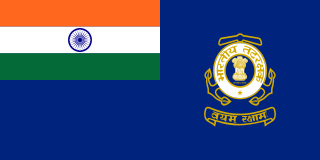
The Director General of the Indian Coast Guard is the head of the Indian Coast Guard. The DG ICG has their office in the Coast Guard Headquarters (CGHQ) in New Delhi. Appointed by the Government of India, the DG ICG reports to the Minister of Defence. The Director General is assisted by four Deputy Directors General, each holding the rank of inspector-general, and other senior officers heading various staff divisions. The Additional Director General of the ICG serves as the second-in-command to the Director General.

The Military Engineer Services (MES) is an inter-service organisation with military and civilian components of its officers and subordinate staff. MES is one of the oldest and largest government defence infrastructure-development agencies in India. Construction work is done with contracts, but maintenance is conducted by departmentally-employed labour (DEL) and contracts. MES is primarily employed in engineering and construction for the Indian Armed Forces, including the Army, Navy, Air Force, the Ordnance Factory Board, and the DRDO. It is also involved in complex projects, including hospitals, airfields, buildings, workshops, roads, runways, hangars, dockyards, airport terminals, sewage treatment plants, solar plants wharves, and other marine structures. MES has been entrusted with the construction of the Indian National War Memorial.

The Integrated Defence Staff (IDS) is an organisation responsible for fostering coordination and enabling prioritisation across the different branches of the Indian Armed Forces. It is composed of representatives from the Indian Army, Indian Navy, Indian Air Force, Ministry of External Affairs, Defence Research and Development Organisation (DRDO), Ministry of Defence and Ministry of Finance. The IDS is headed by Chief of Integrated Defence Staff along with Deputy Chiefs of Integrated Defence Staff. On December 24, 2019, the Cabinet Committee on Security (CCS) established the post of Chief of Defence Staff, a four-star general, a tri-service Chief, that shall lead the defence forces as well as play the role of head of the Department of Military Affairs. The body advises and assists the Chief of Defence Staff.

The Special Group (SG) is the black ops unit of Research and Analysis Wing (R&AW), the foreign intelligence agency of India. It is responsible for covert and paramilitary operations and is known as Spl Grp or 4 Vikas(formerly).

The Director General Armed Forces Medical Services (DGAFMS) is the head of the Armed Forces Medical Services of the Indian Armed Forces. A three-star rank medical flag officer, the DGAFMS is equivalent to Army Commanders and the Defence Secretary. The DGAFMS is the advisor to the Chief of Defence Staff (CDS) and the Minister of Defence on the medical requirements of the Armed Forces.
















